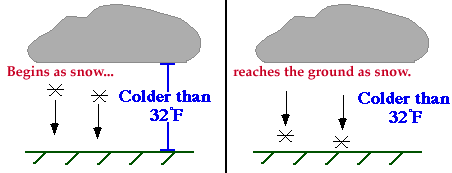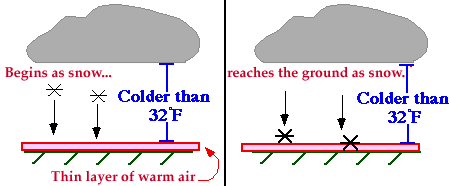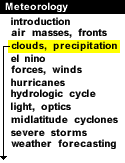
|
Precipitation typically forms high in the atmosphere where the temperature is below freezing. As ice crystals form aloft and fall toward the surface, they collect each other to form large snowflakes. If ground temperature is above 32 F, the freezing level must be located somewhere above the ground. As the falling snow passes through the freezing level into the warmer air, the flakes melt and collapse into raindrops. During the summer months, it is not uncommon for the freezing level to be found at a level above cloud base.

When the air temperature at the ground is less than 32 F, the snowflakes do not melt on the way down and therefore reach the ground as snow.

Occasionally, we observe snow reaching the ground even though the outside temperature is above freezing. This occurs when a very thin layer of warm air is found near the surface.

Since the layer of warm air is so shallow, the precipitation reaches the ground as snow before it has a chance to melt and become rain. For more about precipitation, visit the precipitation section of this module.

fronts |
|

Cloud Types |




